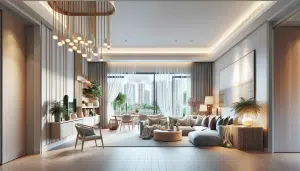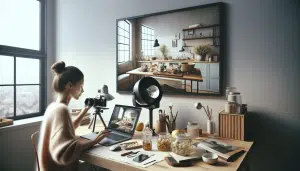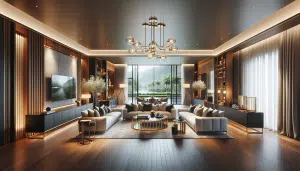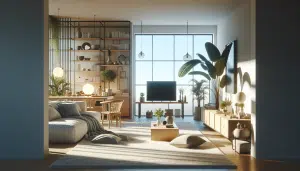Why Minimalist Home Decor Attracts So Many Fans
Lily Carter October 20, 2025
Minimalist home decor is reshaping lifestyles around the globe, making spaces calmer and more functional. Explore what makes this style so appealing, how it transforms daily living, and why so many people are choosing clutter-free environments for well-being and creative inspiration.
What Drives the Popularity of Minimalist Home Decor
Minimalist home decor has taken center stage in lifestyle trends, attracting admirers for its clean lines, neutral palettes, and uncluttered vibe. This approach is rooted in simplicity—intentional choices about what stays and what goes. Many people find that eliminating excess objects creates a sense of calm in their living environment, turning the home into a sanctuary. In a world where work and digital distractions never seem to end, minimalist home design puts focus back on well-being and clarity, rather than accumulation.
Interest in minimalist living also rises from a desire for efficiency. Fewer possessions mean less maintenance, easier cleaning, and a home that always feels ready for guests. These qualities become especially valued as more individuals embrace remote work and flexible schedules, seeking spaces that support productivity and peace. By stripping away unnecessary items, the home naturally becomes more functional, helping to reduce daily stress. High-demand keywords like ‘minimalist spaces’ and ‘decluttered living’ are heavily searched, showing how sought-after the minimalist lifestyle truly is.
This style often appeals to those seeking environmental responsibility, too. Fewer impulse purchases mean less waste and energy use. Choosing versatile pieces that endure over time reinforces sustainability goals. Whether inspired by Scandinavian decor principles or Zen philosophy, fans of the minimalist trend share a preference for quality over quantity. This focus on mindful consumption aligns closely with growing concerns about environmental impact, making minimalist home decor alluring for more than just aesthetic reasons.
The Psychological Impact of Minimalist Interiors
Living in a minimalist environment offers notable mental health benefits, according to behavioral specialists and researchers. A tidy, well-organized home can decrease anxiety and overwhelm, supporting a more peaceful state of mind. By reducing clutter, the visual noise and pressure to keep up with trends or purchases naturally lessens, simplifying daily life and encouraging relaxation. Spaces free of distractions foster mindfulness, helping individuals focus on the present moment. This psychological calm is often reflected in wellness trends that promote tidy spaces as a route to improved happiness.
Minimalist interiors are particularly effective for people who struggle with decision fatigue. Fewer objects to manage translates into fewer daily choices, which frees mental energy for things that really matter. This is especially true in areas such as the kitchen, workspace, or entryway, where clutter tends to accumulate quickly. The minimalist design acts almost like a blank canvas, supporting creativity and clarity. Keywords like ‘mental clarity,’ ‘mindful spaces,’ and ‘stress-free interiors’ support the strong connection between minimalist decor and mental well-being.
Intentional placement of furniture, thoughtful lighting, and a limited color palette are known to soothe the mind. Many who embrace minimalist home decor report feeling inspired, focused, and content. This carries over to other areas of life, such as sleep quality and relationships. By promoting an atmosphere that supports rest and connection, minimalist design reinforces the importance of home as a place for emotional renewal—something that resonates with many, especially during challenging times.
How Minimalist Home Decor Supports Sustainable Living
Minimalist housing trends are closely linked to sustainability. By purchasing fewer, higher-quality items, individuals reduce consumer waste and energy usage, aligning home decor with eco-friendly values. Furniture manufacturers and home goods brands are increasingly offering responsibly sourced options that fit the minimalist ethos—natural materials, neutral designs, and products built for longevity are now in high demand. Homeowners who are interested in greener living find that endless clutter often runs counter to environmental goals, making the minimalist approach doubly attractive.
The influence of minimalism extends beyond just the home. People who adopt minimalist interiors often make other sustainable lifestyle choices: composting, reducing single-use plastics, or investing in multi-functional items that stand the test of time. As environmental consciousness rises among younger generations, keywords such as ‘eco-friendly decor’ and ‘sustainable minimalist’ trend frequently in online searches. This reflects a broader cultural shift toward ethical and responsible living, with decorating choices serving as both personal and public statements.
Minimalist homes are also naturally more energy-efficient. They require less heating, cooling, and lighting—especially when clutter is cleared from windows, floors, and ventilation. This can translate to lower utility costs, reduced carbon footprints, and a direct alignment between personal finance and ecological stewardship. As cities encourage green building and energy efficiency, minimalist living becomes not just a style preference, but a conscientious, practical response to global environmental challenges.
Finding Your Minimalist Style at Home
Everyone brings their own preferences to minimalist home decor, making it customizable and flexible. Some people gravitate toward the Scandinavian look, which combines light woods, whites, and simple prints. Others find inspiration in Japanese interiors, rooted in Zen and nature, or the balance and symmetry seen in modernist architecture. The beauty is that minimalist principles work in large homes, apartments, or even shared spaces. The goal isn’t to create an empty room, but to choose furnishings and accents that have meaning and function.
Getting started with a minimalist home is often simpler than imagined. Begin by removing items that are broken or no longer bring joy. Next, organize what’s left by room or purpose, setting aside only what supports daily routines or contributes to a calming atmosphere. Online guides often recommend investing in multifunctional furniture, concealed storage, or modular shelving. These options provide practical solutions for maintaining a clutter-free home, making maintenance easier over time. Search volumes for ‘minimalist organization’ and ‘simple decor ideas’ reflect ongoing demand for practical tips in this area.
Art and personal expression still shine in minimalist spaces. Rather than filling every corner, display a few favorite items—a framed photo, a statement chair, or a unique light fixture—that serve as focal points. This highlights individual taste within a clean, intentional design. Experimenting with textures or adding greenery also keeps minimalist interiors feeling warm and lived-in. Ultimately, the minimalist approach is deeply personal, as homeowners tailor their space to support wellness while expressing their unique aesthetic with subtle flair.
Challenges and Rewards of Maintaining Minimalist Spaces
Transitioning to minimalist home decor isn’t without obstacles. Emotional attachment to objects, fear of letting go, or expectations from family members can slow the process. Balancing needs and sentimentality might require gradual steps and open communication—sometimes even enlisting the support of a professional organizer or following an online course on decluttering. The most successful transitions emphasize patience, understanding that real change comes over weeks or months, rather than overnight. Resources abound for those eager to learn more about adopting minimalist habits in practical, manageable ways.
Staying minimalist over the long term requires maintenance. Avoiding impulse purchases, scheduling regular reviews of belongings, and resisting trends that encourage accumulation are all strategies that keep a home aligned with minimalist values. Many people establish a rhythm of ‘one in, one out’—for every new item added, one is removed. The reward for this effort is a sense of ongoing control and intention. Survey data shows that those who maintain minimalist spaces often report better sleep and productivity, as well as stronger feelings of satisfaction with their home environments.
The rewards extend well beyond appearance. A minimalist home often feels more inviting to visitors, easier to keep clean, and better suited to flexible routines, like remote work or family gatherings. Minimalism invites continual improvement, with many practitioners enjoying the journey just as much as the outcome. By framing household choices as an evolving experiment, minimalist living becomes a source of empowerment—offering both peace and possibility, whether in a busy city loft or a country cottage.
Inspiration from Minimalist Influencers and Resources
Social media platforms and design blogs teem with inspiration for anyone considering minimalist home decor. Influencers and experts often share before-and-after photos, organization tips, and mindset advice, helping followers understand the real-life transformations that come with this lifestyle. Visual resources, such as video tours or interactive guides, make minimalist principles accessible to those at any stage of the journey. Learning from diverse sources can spark creativity and motivation, offering practical ways to begin or continue the minimalist path at home.
Many online courses and workshops focus specifically on minimalist design and organization, providing actionable steps for decluttering, furniture arrangement, or creating harmony. Some are hosted by design schools or experienced interior decorators, while others are rooted in psychology or wellness research. For those who like to read, books and podcasts expand on the emotional and cultural roots of minimalism, providing deeper understanding and context. Popular keywords like ‘minimalist home course’ or ‘declutter challenge’ highlight the range of options available for ongoing learning and support.
Design magazines, sustainability forums, and even government housing websites occasionally publish features or studies on minimalist home trends. These resources can answer questions about cost, value, and feasibility, as well as offer templates and sample layouts. Exploring what others have accomplished reveals the flexibility of minimalist decor, proving that the style can adapt to different needs and personalities. Whether motivated by health, artistry, or a greener planet, minimalist design offers continual opportunities for growth and change.
References
1. American Psychological Association. (2022). The power of decluttering for mental health. Retrieved from https://www.apa.org/topics/mental-health/decluttering
2. Environmental Protection Agency. (2023). Reducing waste: What you can do. Retrieved from https://www.epa.gov/recycle/reducing-waste-what-you-can-do
3. National Sleep Foundation. (2022). Bedroom environment and sleep. Retrieved from https://www.sleepfoundation.org/sleep-hygiene/bedroom-environment-and-sleep
4. Harvard T.H. Chan School of Public Health. (2022). Sustainable living guide. Retrieved from https://www.hsph.harvard.edu/sustainability/sustainable-living-guide/
5. The Minimalists. (2023). Minimalism: Where less is so much more. Retrieved from https://www.theminimalists.com/minimalist-home/
6. Yale Sustainability. (2023). Sustainable home design. Retrieved from https://sustainability.yale.edu/sustainable-home-design







